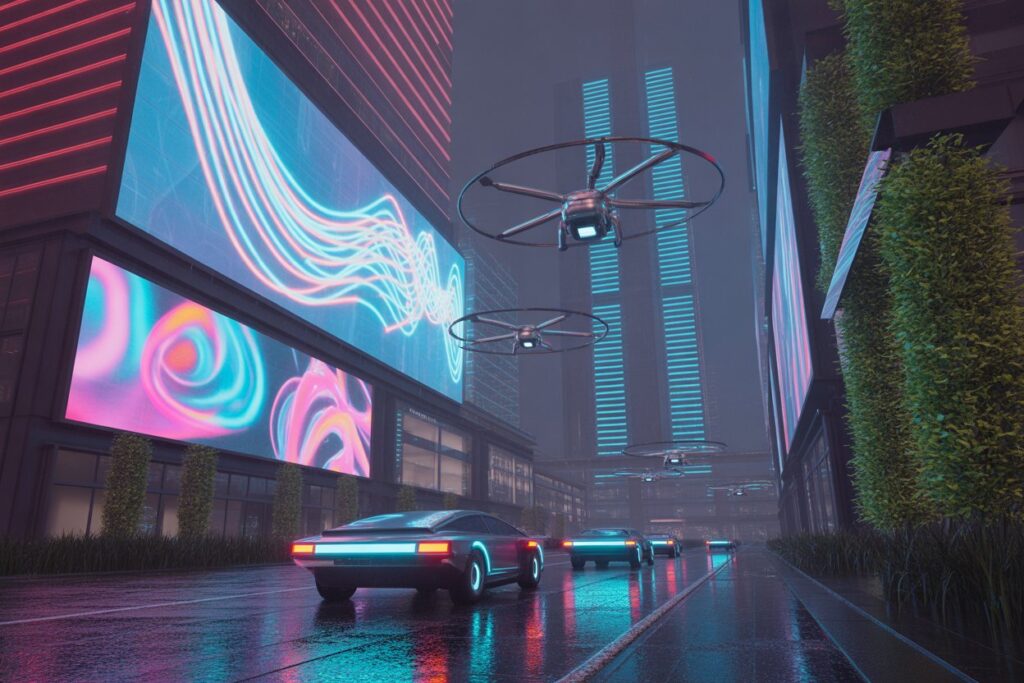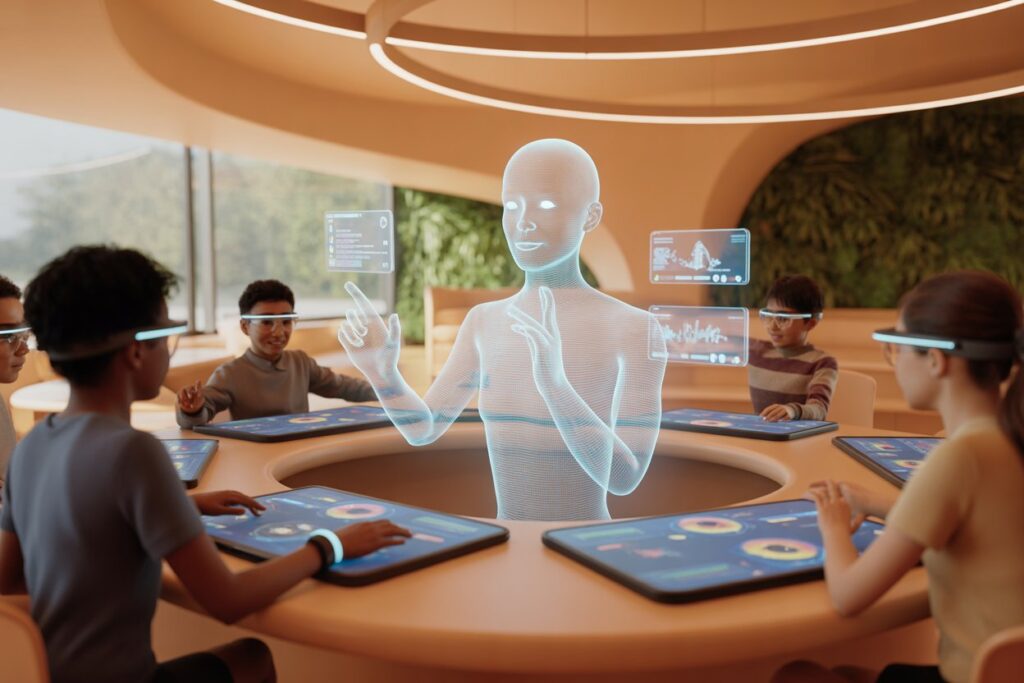Artificial Intelligence (AI) has transitioned from a niche field of computer science to a transformative force reshaping industries, economies, and societies. Over the past decade, AI innovations have accelerated at an unprecedented pace, driven by advancements in computing power, vast data availability, and breakthroughs in algorithms. From healthcare to transportation, education to entertainment, AI is revolutionizing how we live, work, and interact with the world. This article explores the latest AI innovations, their applications, challenges, and the future they promise, while addressing their societal and ethical implications.
The Evolution of AI
AI’s roots trace back to the 1950s, when pioneers like Alan Turing proposed machines that could mimic human intelligence. Early AI systems were rule-based, limited by computational constraints and a lack of data. The 21st century, however, marked a turning point with the advent of machine learning (ML), a subset of AI that enables systems to learn from data without explicit programming. The introduction of deep learning, powered by neural networks, further accelerated AI’s capabilities, enabling machines to process complex patterns in images, text, and sound.
Today, AI innovations are driven by:
Big Data: The exponential growth of data from social media, IoT devices, and digital platforms provides the raw material for AI systems.
Computing Power: GPUs and TPUs have enabled faster processing of complex algorithms.
Algorithmic Advancements: Techniques like reinforcement learning, generative adversarial networks (GANs), and transformer models have expanded AI’s potential.

Key AI Innovations
AI is no longer confined to research labs; it’s embedded in everyday technologies. Below are some of the most impactful AI innovations shaping the present and future.
- Generative AI and Creative Applications
Generative AI, which creates new content such as text, images, music, or videos, has seen remarkable progress. Models like OpenAI’s GPT-4, DALL·E 3, and Stable Diffusion have democratized creativity. These systems can:
Write human-like text for articles, stories, or code.
Generate photorealistic images from text prompts.
Compose music or design virtual environments.
Applications:
Content Creation: Marketers use AI to generate ad copy, social media posts, and personalized emails.
Entertainment: AI-generated art and music are featured in galleries and streaming platforms.
Design: Architects and product designers use AI to create prototypes and visualizations.
Example: In 2024, AI-generated short films won awards at independent film festivals, showcasing the creative potential of tools like Runway ML.
- AI in Healthcare
AI is transforming healthcare by improving diagnostics, treatment, and operational efficiency. Key innovations include:
Medical Imaging: AI algorithms analyze X-rays, MRIs, and CT scans with accuracy rivaling or surpassing human radiologists. Google’s DeepMind, for instance, detects diabetic retinopathy with high precision.
Drug Discovery: AI accelerates drug development by predicting molecular interactions. AlphaFold by DeepMind solved protein folding, a decades-old biological puzzle, in 2020, paving the way for faster drug design.
Personalized Medicine: AI tailors treatments based on a patient’s genetic makeup, improving outcomes for conditions like cancer.
Case Study: In 2025, AI-powered wearables monitor vital signs in real-time, alerting doctors to anomalies before they become critical, reducing hospital readmissions by 20% in some regions.

- Autonomous Systems
AI is at the heart of autonomous vehicles, drones, and robotics. These systems rely on computer vision, sensor fusion, and reinforcement learning to navigate complex environments.
Self-Driving Cars: Companies like Tesla, Waymo, and Cruise are deploying Level 4 autonomous vehicles in urban areas. These cars use AI to process data from LIDAR, cameras, and radar to make real-time driving decisions.
Drones: AI-powered drones are used for delivery, agriculture, and surveillance. Amazon’s Prime Air, for example, aims to deliver packages in under 30 minutes using AI-optimized flight paths.
Robotics: AI enables robots to perform tasks like warehouse automation, surgical assistance, and elderly care. Boston Dynamics’ Spot robot uses AI to navigate uneven terrain for industrial inspections.
Impact: Autonomous systems are projected to reduce traffic accidents by 90% by 2035, as AI eliminates human error in driving.
- Natural Language Processing (NLP)
NLP has evolved from basic chatbots to sophisticated systems capable of understanding context, sentiment, and intent. Innovations include:
Conversational AI: Systems like Grok (developed by xAI) and Google’s Gemini engage in human-like conversations, answering complex queries and assisting with tasks.
Language Translation: Real-time, context-aware translation tools like DeepL break down language barriers in global communication.
Sentiment Analysis: Businesses use NLP to analyze customer feedback, improving products and services.
Example: In 2025, AI-powered virtual assistants handle 70% of customer service inquiries in industries like retail and banking, reducing costs and improving response times.
- AI in Education
AI is personalizing education, making learning accessible and tailored to individual needs.
Adaptive Learning Platforms: Tools like Duolingo and Khan Academy use AI to adjust lessons based on a student’s progress.
Automated Grading: AI systems evaluate essays and exams, providing instant feedback to students and teachers.
Virtual Tutors: AI tutors offer 24/7 support, helping students with subjects like math and science.
Impact: AI-driven education platforms have increased student engagement by 30% in underserved communities, bridging educational gaps.
- AI for Sustainability
AI is tackling climate change by optimizing energy use and supporting environmental conservation.
Energy Management: AI optimizes power grids, reducing energy waste. Google’s DeepMind reduced data center cooling costs by 40% using AI.
Agriculture: AI-powered precision farming analyzes soil, weather, and crop data to maximize yields while minimizing resources.
Wildlife Conservation: AI monitors endangered species through drones and cameras, helping prevent poaching.
Case Study: In 2024, AI models predicted drought patterns in sub-Saharan Africa, enabling preemptive food distribution and saving thousands of lives.
- AI in Cybersecurity
As cyber threats grow, AI is bolstering defenses.
Threat Detection: AI identifies anomalies in network traffic, detecting malware and phishing attempts in real-time.
Automated Response: AI systems neutralize threats faster than human analysts, minimizing damage.
Fraud Prevention: Banks use AI to detect fraudulent transactions with 95% accuracy.

Example: In 2025, AI-driven cybersecurity platforms thwarted a global ransomware attack, saving businesses an estimated $10 billion.
Challenges and Ethical Considerations
While AI innovations offer immense potential, they come with challenges:
Bias and Fairness: AI systems can inherit biases from training data, leading to unfair outcomes in hiring, policing, and lending. Efforts to develop fair AI models are ongoing but complex.
Privacy: AI’s reliance on vast datasets raises concerns about data security and user consent. Regulations like GDPR and CCPA aim to address these issues.
Job Displacement: Automation may displace workers in industries like manufacturing and customer service. Reskilling programs are critical to mitigate this impact.
AI Safety: Ensuring AI systems are safe and controllable is a priority, especially as they become more autonomous. Researchers are exploring “explainable AI” to make decisions transparent.
Ethical Use: The potential for AI in surveillance, deepfakes, and autonomous weapons raises ethical dilemmas. International frameworks are needed to govern AI deployment.
The Future of AI Innovations
The next decade will see AI become even more integrated into daily life. Emerging trends include:
General AI (AGI): Unlike narrow AI, which excels at specific tasks, AGI aims to replicate human-like intelligence across domains. While still theoretical, companies like xAI are working toward this goal.
AI-Human Collaboration: AI will augment human capabilities, enabling professionals to focus on creative and strategic tasks.
Edge AI: Running AI models on devices like smartphones and IoT sensors will reduce latency and enhance privacy.
Quantum AI: Quantum computing could exponentially increase AI’s processing power, solving problems currently deemed intractable.
Prediction: By 2030, AI is expected to contribute $15.7 trillion to the global economy, according to PwC, with healthcare and manufacturing seeing the largest gains.
Societal Implications
AI’s transformative power extends beyond technology. It has the potential to:
Reduce Inequality: AI can democratize access to education, healthcare, and financial services.
Enhance Creativity: By automating routine tasks, AI frees humans to focus on innovation.
Reshape Work: New roles like AI ethicists and data curators will emerge, while traditional jobs evolve.
However, ensuring equitable access to AI benefits is crucial. Developing nations must be included in the AI revolution to avoid widening global disparities.
Conclusion
AI innovations are redefining the boundaries of what’s possible, from creating art to curing diseases and combating climate change. While challenges like bias, privacy, and job displacement persist, the potential for AI to solve humanity’s greatest problems is immense. As we move toward a future where AI is ubiquitous, collaboration between technologists, policymakers, and society will be essential to harness its power responsibly. The journey of AI is just beginning, and its next chapter promises to be even more revolutionary.
Leave a Reply